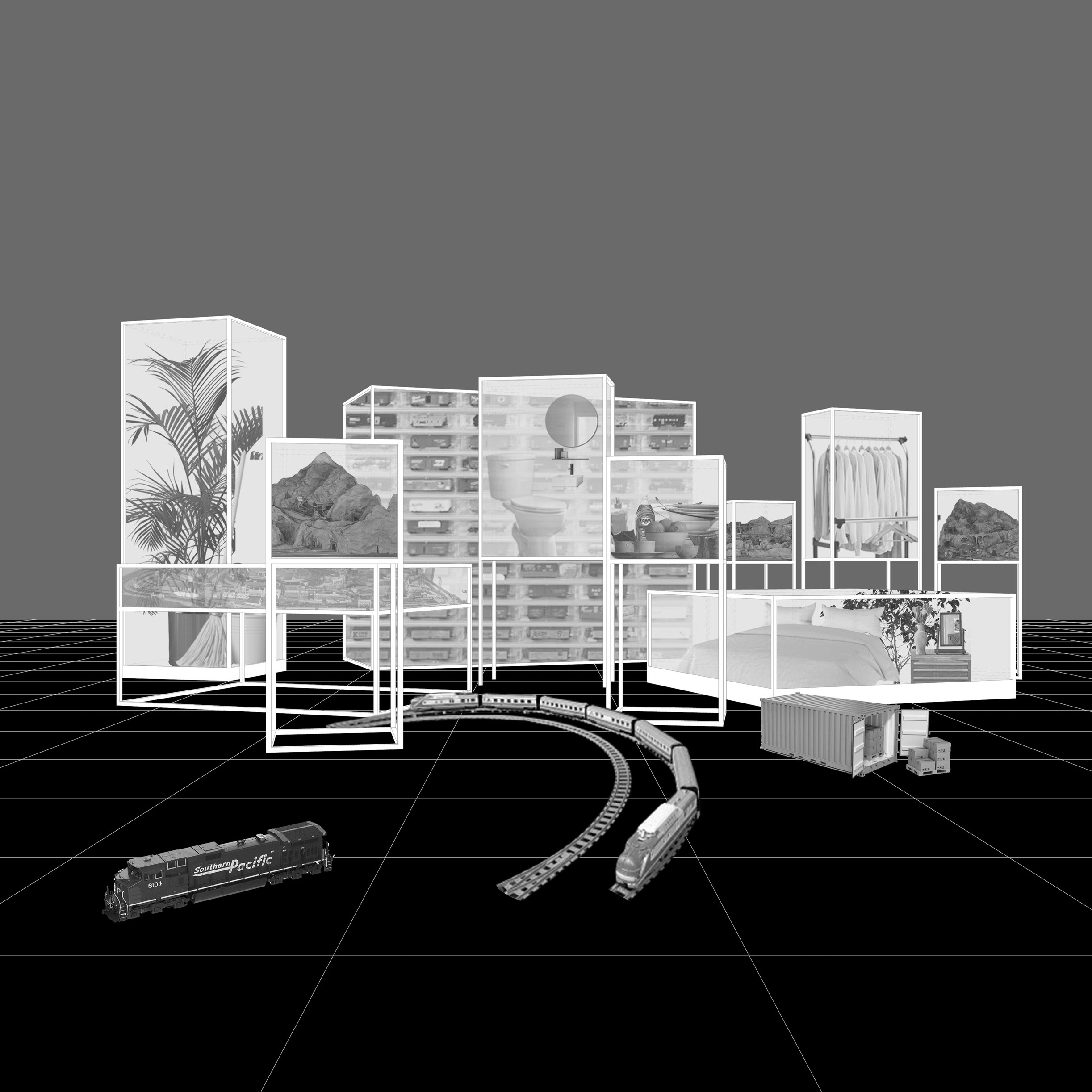Vitrines for Living

by Stephanie Lloyd (MArch I ’22) and Diandra Rendradjaja (MArch I ’22)
Contemporary housing practices promote density by means of enormity and uniformity. As an economic model, unit sizes and unit types have been standardized, predicated on outdated conventions of family units that create a clear distinction between us, our stuff, and our space. With the pursuit of maximizing leasable square footage, little attention is typically paid to the quality of the interior condition, and instead, the interiors have become increasingly agnostic, despite the fact that our lives are now, more than ever, defined by the stuff that we collect. Our tendencies for hoarding, accumulating, collecting, and curating are met with an architectural refusal to engage; there is no architectural compromise in the state of contemporary housing and living.
Instead, we are interested in the granular, interior, and intimate qualities of collective living, and how these atomized components might ultimately affect the urban condition. By questioning the criteria for selecting units in the context of contemporary housing practices, this project proposes the reconsideration of conventional unit sizes and unit types, and proposes that living might take place among, within, and around vitrines. Unit types and unit sizes are no longer defined by the conventions of a family unit. Rather, the size and character of a resident’s possessions define the number of vitrines required to satisfy the needs of domestic collectivity. Unit types are not described by bed count. Units are defined, instead, by vitrine count.
Vitrines are the granular components that house objects and programs for domestic living. Comprised of steel frames, glass, and modulated concrete blocks, the vitrines are at once architecture and a ready-made furniture. Acknowledging that contemporary residents might travel light, bringing with them only the collections that enable domestic living, the vitrines become an interior infrastructure that delineates space, curates possessions, and produces by-products of collectivity. By taking seriously the variation in contemporary collections of residents in the Jamaica Plain and Roxbury neighborhoods, specific vitrine types have emerged in order to compartmentalize the variations of domestic living. These vitrines—top-down, in the round, platform, and elevational—anticipate and choreograph unique spatial relationships to one’s collections.
While the project appears at first to be both enormous and uniform, the bottom-up deployment of granular infrastructural components produces by-products of collectivity at both an intimate and urban scale. This new infrastructure challenges both the identity and economic motivations of contemporary housing by proposing a system for the curation of collectivity—vitrines for living.








